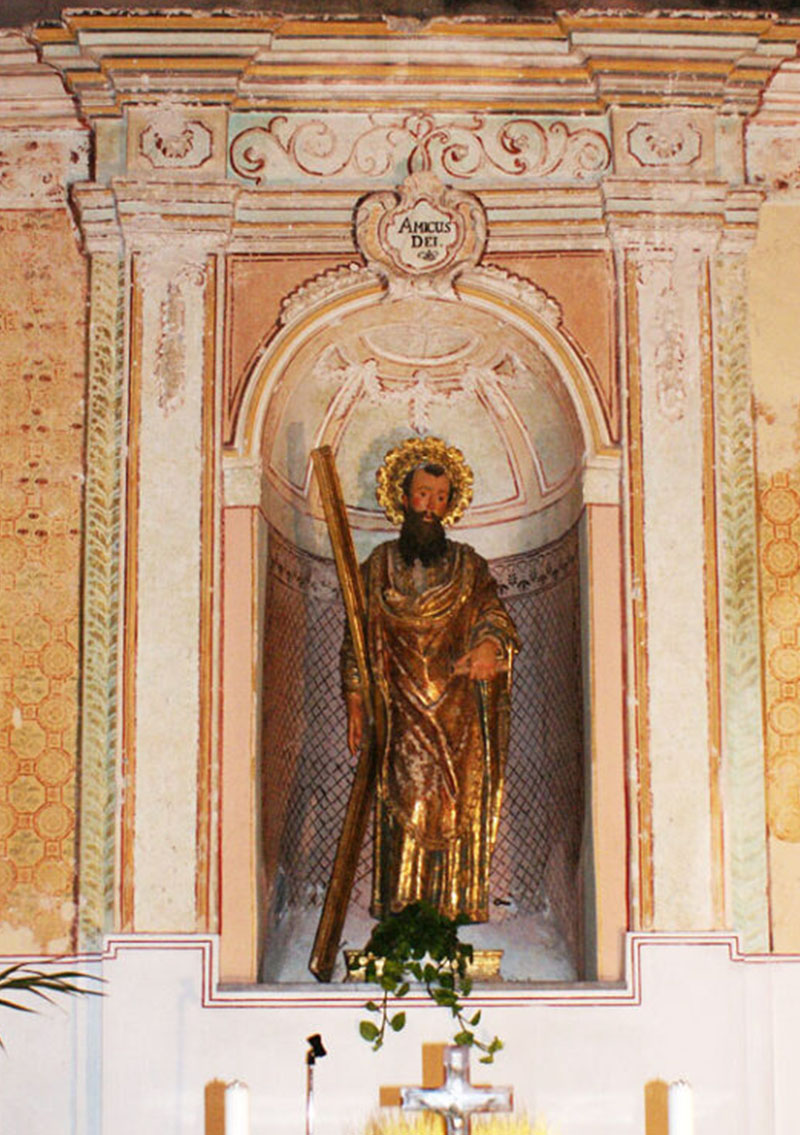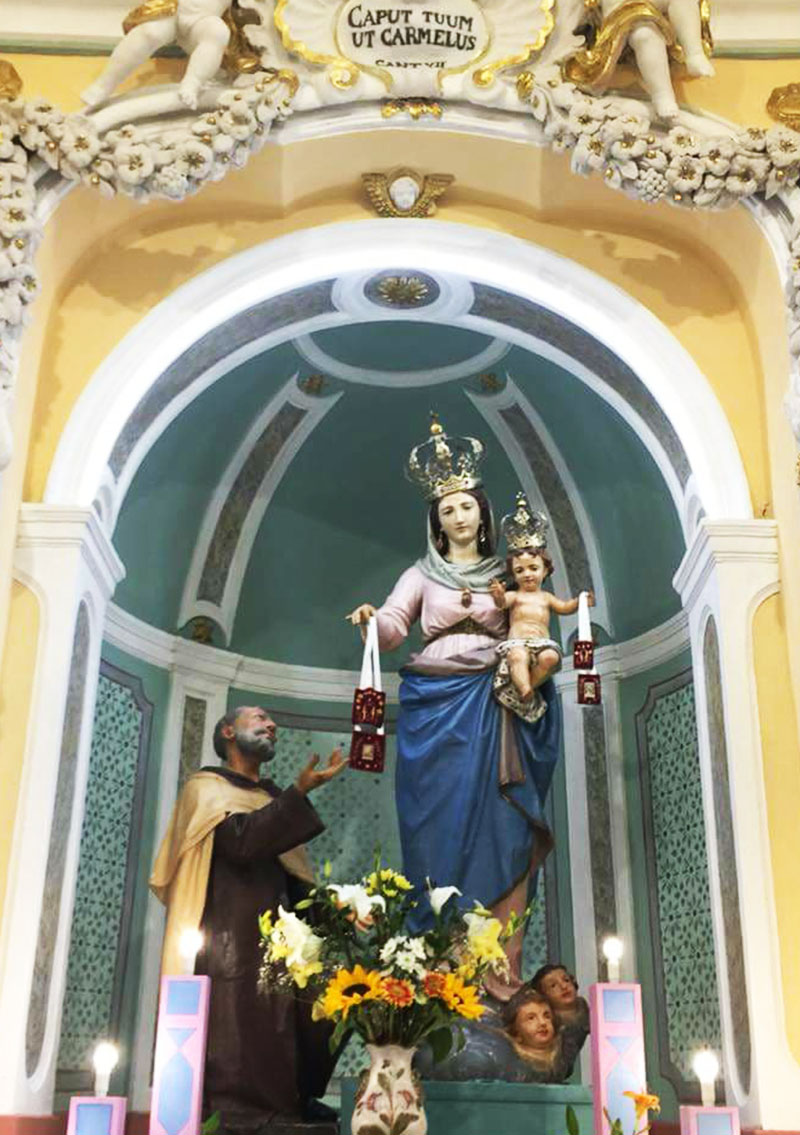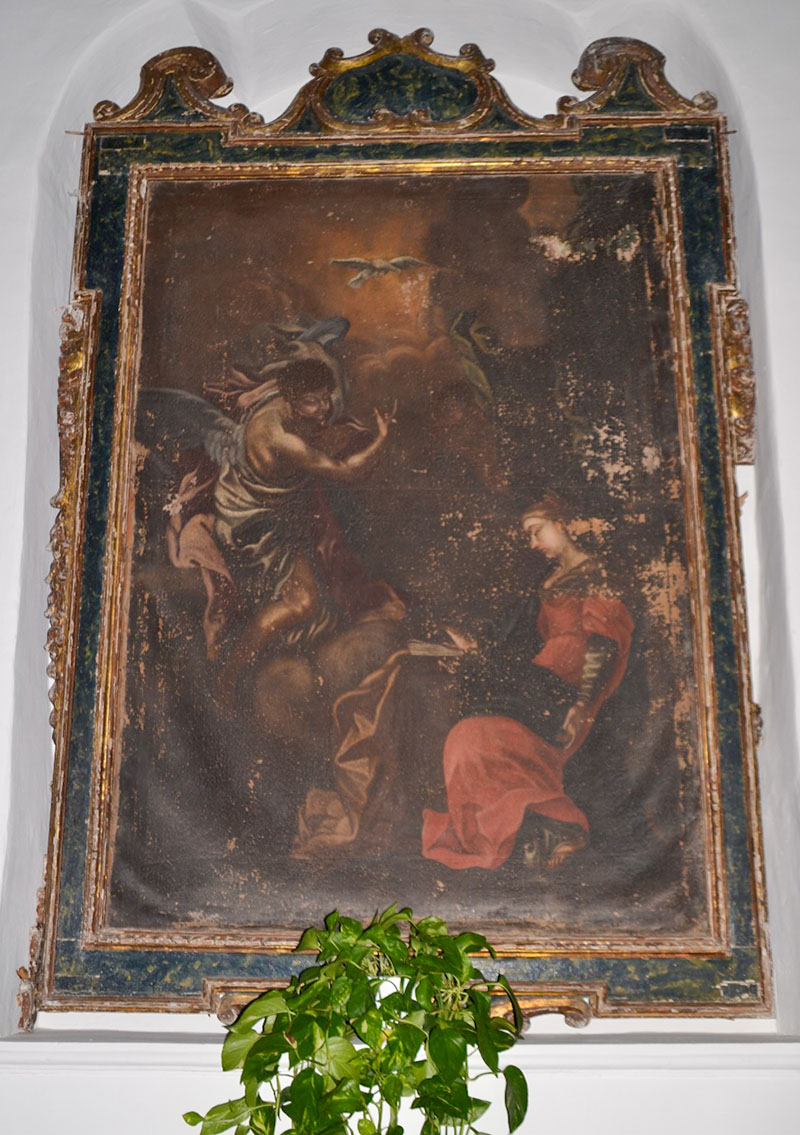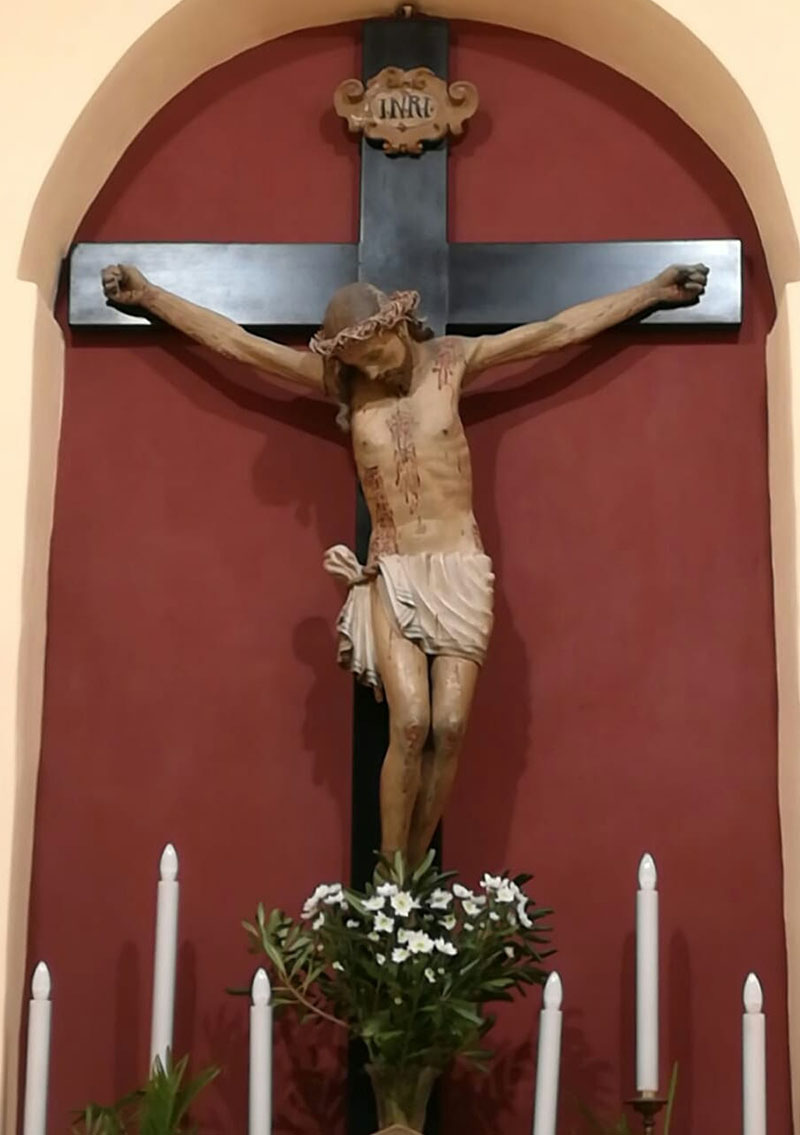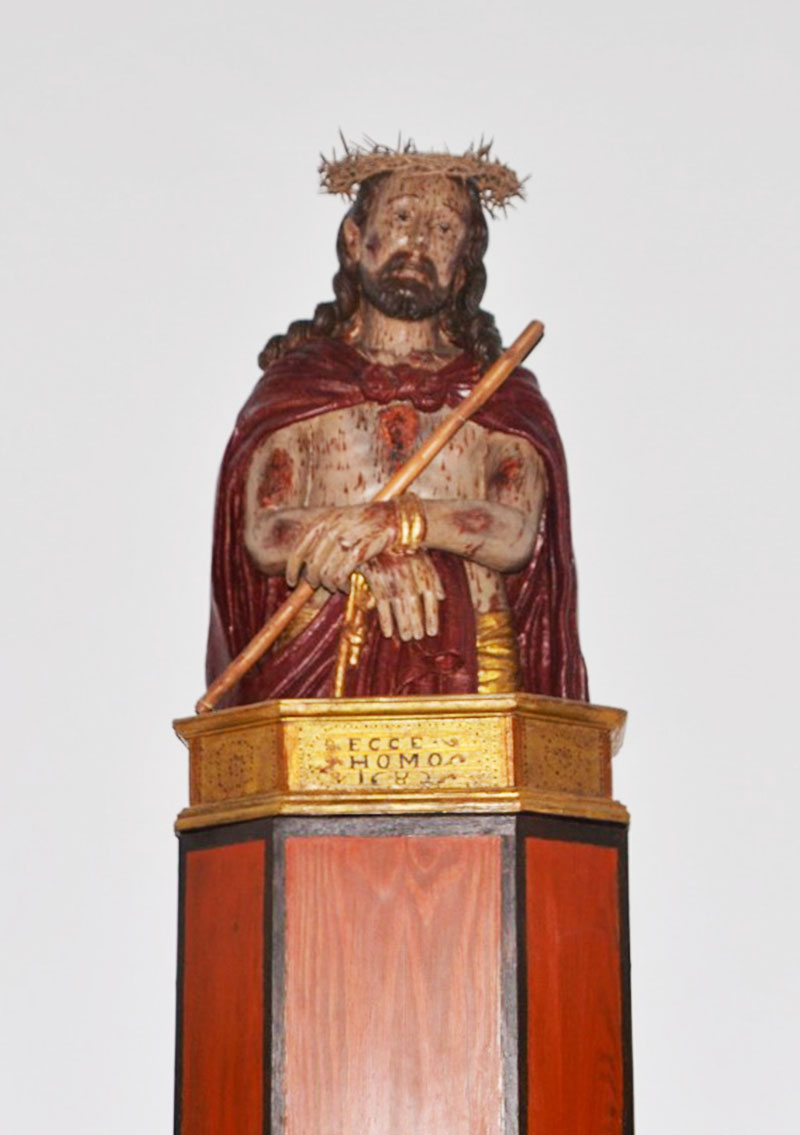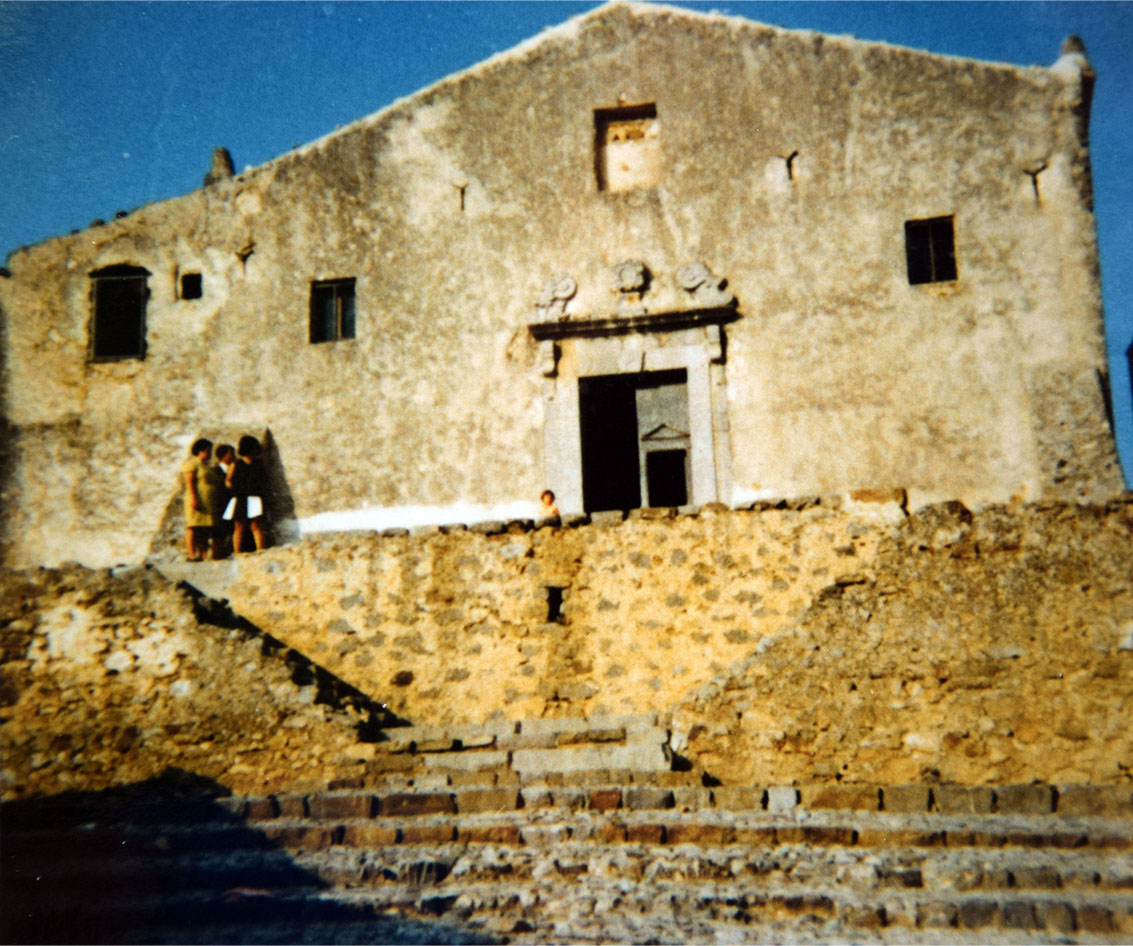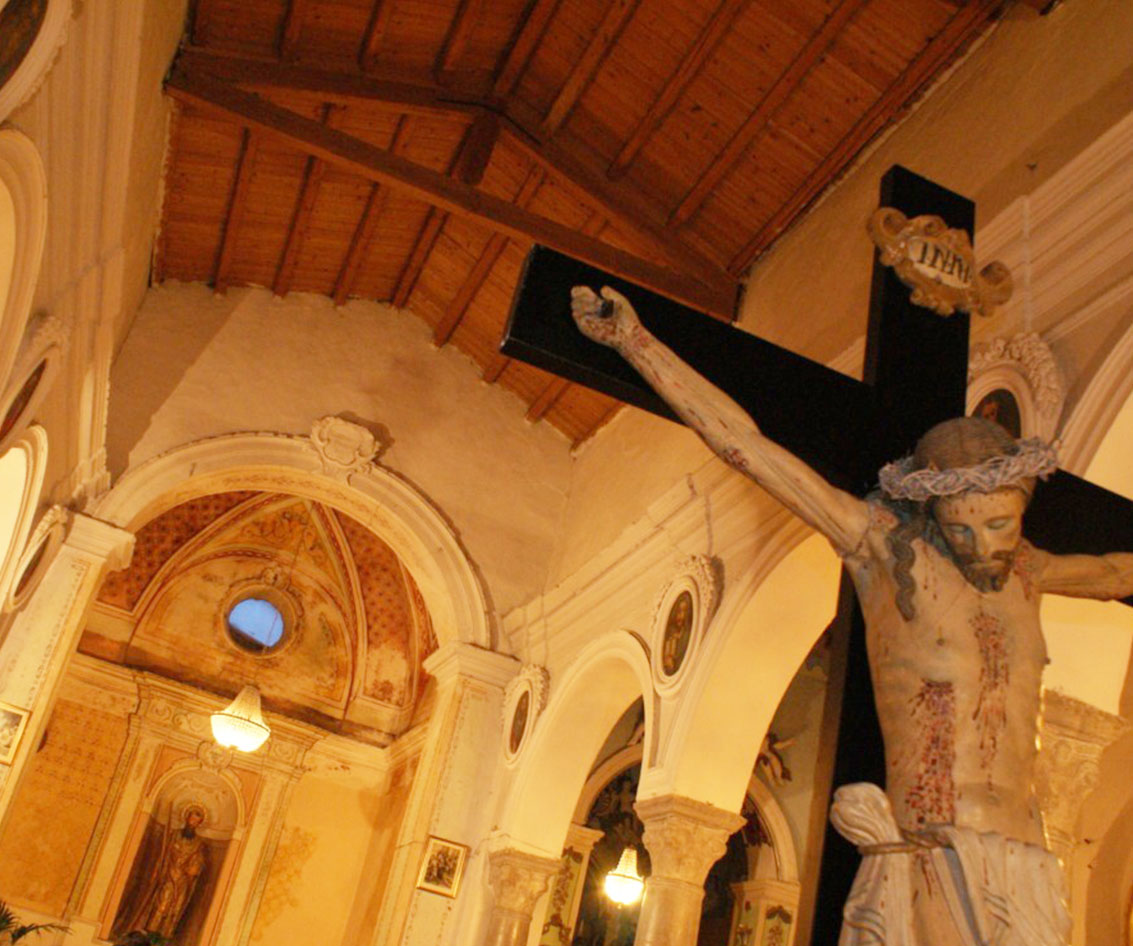Your basket is currently empty!
The church of St. Andrew the Apostle was founded around the XVII century by the Sacred Bartolomeo Bellhomo in the neighborhood called “delli Piraini” in the upper part of the town, as shown in the Revelations of the State Archives of Palermo:
“Antonino Gargano has a lock in the Communi qta delli Piraini di T 3- of land near the house of Antonio Cirincione and near the Church of the Glorious Apostle St. Andrew in which there are four feet of walnuts, two of pears, a foot of black mulberry, a foot of white mulberry, three of almonds, two of apples, two of figs and a foot of black cherry “(State Archives-Palermo, Deputation of the Kingdom, Revelations 2945, f. 87, year 1748).
The internal part has three naves with a trussed roof supported by monobloc stone columns with capitals decorated with acanthus leaves. The access to the main entrance is by a staircase. The portal is in stone on whose center a fish is carve and the date of 1722 is engraved.
The church is dedicated to St. Andrew the Apostle, patron saint of fishermen, of which you can admire a valuable gilded wooden simulacrum made by Francesco Reyna and painted by Vincenzo Di Giovanni in 1690, the same authors of the simulacrum of St. Joseph, kept at the Old Matrix.
The chapel on the right contains a beautiful image of the Virgin of Carmel dating back to 1912. Between the precious paintings stand out the one depicting Saints James, Philip and Andrew signed in 1628 by Geronimo Lombardo of Calabria; the Good Death of Fra’ Felice from Sambuca (1733-1805); the Annunciation, attributed to the hand of Zoppo di Ganci; Maria SS. del Lume, protectress of the sea, similar to the miraculous effigy that is venerated in the seaside village of Porticello (PA).



